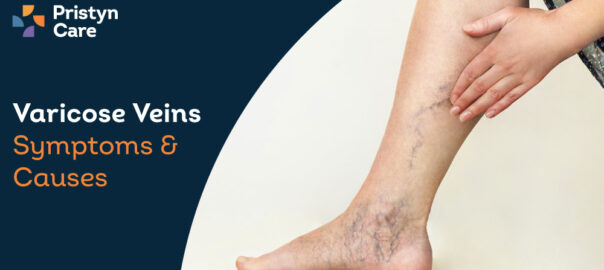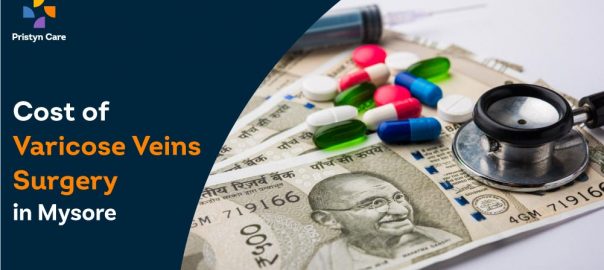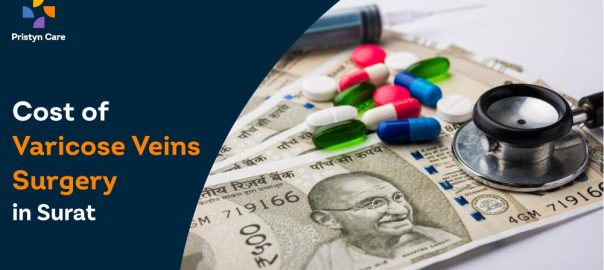![]() Views: 518
Views: 518
A Guide on Peripheral Veins Thrombosis – Symptoms, Causes, & Treatment
Venous thrombosis is becoming a very common problem, and every year, the cases of thromboembolism are rising considerably. Many people take venous problems lightly and end up ignoring them for a very long time until they become severe and lead to complications.
Dedicated Support at Every Step!
Our Doctors are available 24 hours a day, 7 days a week to help you!
Today, we are going to discuss a common yet misunderstood vein problem, i.e., peripheral vein thrombosis. In this blog post, we will explore the symptoms, causes, and treatment options for peripheral vein thrombosis, providing a comprehensive understanding of this condition.
Table of Contents
What is Peripheral Vein Thrombosis(PVT)?
Peripheral vein thrombosis, also known as superficial vein thrombosis or phlebitis, is a condition characterized by the formation of blood clots in the veins near the surface of the skin. While it is typically not life-threatening, it can cause discomfort and complications if left untreated.
People often mistake peripheral vein thrombosis (PVT) with deep vein thrombosis (DVT), which is an entirely different condition. So, first, we will gather information about PVT and then compare these two conditions as well. Let’s begin with understanding the symptoms.
No Cost EMI, Hassle-free Insurance Approval
Symptoms of Peripheral Vein Thrombosis
In some cases, peripheral vein thrombosis may cause symptoms in the earlier stages. But usually, clear symptoms are present in the affected area. And it’s important to understand these symptoms so that you can identify the condition and take prompt action for timely treatment.
Common signs and symptoms that you should watch out for are explained below:
- Pain and Tenderness: You may experience pain, which can be described as a throbbing or cramping sensation in the affected area. The pain may get worse with movement or pressure.
- Redness or Warmth: The skin over the affected area may appear red in color or feel warm when touched due to inflammation in the veins.
- Swelling: Edema or swelling is another common symptom of peripheral vein thrombosis. The area may feel swollen or appear larger than usual.
- Hardening of the Vein: The vein in which the clot is present will feel firm or hard when touched.
- Visible Red Lines: In some cases, red lines along the affected vein may also be visible, which will indicate inflammation.
Being aware of these symptoms is very important for every individual.
Causes & Risk Factors of PVT
There are various causes and risk factors that can lead to the development of blood clots in peripheral veins. Some common causes and risks factors include the following:
- Inactivity or prolonged immobility: Sitting or lying down for extended periods can impede your blood circulation and increase the risk of blood clot formation.
- Injury or trauma: Physical trauma to a vein, such as from surgery, accidents, or intravenous catheters, can trigger inflammation and clotting.
- Varicose veins: Individuals with varicose veins, which are enlarged and twisted veins, have a higher risk of developing peripheral vein thrombosis.
- Pregnancy and the postpartum period: Hormonal changes and pressure on veins during pregnancy can increase the likelihood of clot formation. Postpartum women also have an elevated risk due to physical changes after delivery.
- Hormonal therapy: Certain hormonal treatments, including hormone replacement therapy and birth control pills, can increase the risk of blood clots.
- Obesity: Excess body weight can place additional strain on veins and disrupt blood flow, predisposing individuals to clot formation.
Understanding these underlying causes and risk factors of peripheral vein thrombosis can play a major role in the management and prevention.
Management & Treatment Options for Peripheral Vein Thrombosis
Many people tend to ignore vein problems, believing that they might resolve them on their own after some time. However, that may not be the case every time. Timely and appropriate treatment is essential to manage the condition effectively. Treatment strategies include alleviating the symptoms, preventing further clot formation, and reducing the risk of complications. Some additional preventative measures are also recommended to reduce the likelihood of peripheral vein thrombosis.
The common management and treatment options for peripheral vein thrombosis:
- Medications: Nonsteroidal anti-inflammatory drugs (NSAIDs) may be prescribed to relieve pain and reduce inflammation. Anticoagulant medications, such as heparin or low molecular weight heparin, are often prescribed to prevent clot enlargement and reduce the risk of complications.
- Compression Therapy: Wearing compression stockings or bandages can promote blood flow, reduce swelling, and prevent clot formation. Compression garments are particularly useful for individuals with varicose veins or a history of peripheral vein thrombosis.
- Elevation: Elevating the affected limb above the heart level can aid in reducing swelling and improving blood circulation. This simple measure is often recommended in conjunction with other treatments.
- Warm compresses: Applying warm compresses to the affected area can help alleviate pain, reduce inflammation, and promote healing. However, it is important to avoid excessive heat to prevent burns.
- Activity and Mobility: Regular physical activity and avoiding prolonged periods of immobility can enhance blood circulation and reduce the risk of blood clot formation. Simple exercises like walking and calf muscle stretches are beneficial.
- Lifestyle modifications: Maintaining a healthy lifestyle by managing body weight, quitting smoking, and following a balanced diet can reduce the risk of peripheral vein thrombosis.
- Surgical intervention: In some cases, surgical removal of the blood clot or ligation of the affected vein may be necessary, especially if the clot is extensive or causes severe symptoms. However, this is less common and typically reserved for complicated cases.
The most suitable treatment method is chosen by the doctor after diagnosing the patient and identifying the severity of the condition.
Comparison Between Peripheral Vein Thrombosis & Deep Vein Thrombosis
As discussed above, here is a comparison table that lists the key differences between PVT and DVT.
| Aspects | Peripheral Vein Thrombosis (PVT) | Deep Vein Thrombosis (DVT) |
| Location | Superficial veins located near the skin’s surface | Deep veins located within the muscles |
| Severity | Generally less severe | Potentially life-threatening if not managed |
| Blood Clot Formation | Clot forms in the superficial veins connected to deep veins | Clot forms in the deep veins connected to the heart |
| Symptoms | Present with pain, redness, swelling, warmth, hardening of the vein, and visible red lines | Present with pain, swelling, warmth, skin discoloration, tenderness, and possible palpable cord-like vein |
| Risk Factors | Varicose veins Inactivity Injury or trauma Hormonal therapy Pregnancy | Immobility Recent surgery Cancer Obesity Advanced age Genetic predisposition |
| Complications | Less likely to cause complications | Can lead to pulmonary embolism (PE), which is life-threatening |
| Diagnosis | Physical exam Ultrasound Blood test | Ultrasound Venography D-dimer blood test |
| Treatment | Medications (NSAIDs, anticoagulants) Compression Therapy Elevation Warm Compress | Anticoagulant medications Thrombolytic therapy Compression stockings Elevation Lifestyle changes |
| Prognosis | Generally favorable with timely treatment | Depends on the severity, location, and promptness of the treatment Can have potential long-term complications |
| Prevention | Exercise Mobility Maintaining a healthy weight Avoiding prolonged immobility | Regular exercise Weight management Avoiding prolonged immobility Compression stockings during travel |
Contact Pristyn Care to Get Advanced Treatment for Peripheral Vein Thrombosis
If you have been experiencing pain, swelling, redness, or other symptoms in your legs, don’t delay treatment and get in touch with Pristyn Care. We provide advanced treatment for various vein-related issues, including varicose veins, deep vein thrombosis, and peripheral vein thrombosis. We have a dedicated team of vascular specialists who are well-trained in traditional and modern techniques used to treat vascular disorders.
Book an appointment with us and talk to our experts to discuss your concerns and plan the treatment accordingly.










